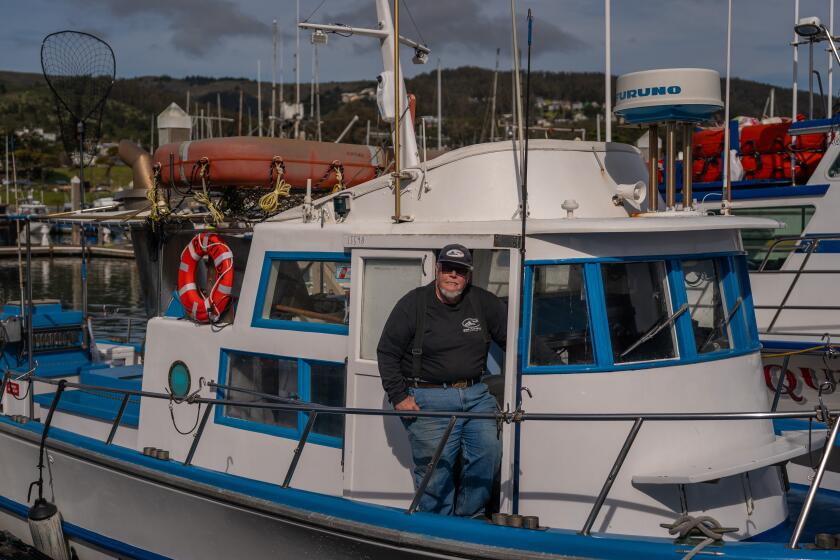A Matter of Leadership, of Vision, of National Will : Our cities can be saved, but only if a courageous blueprint is drawn
- Share via
Last week Congress passed a $1.1-billion emergency urban aid bill and sent it to President Bush. That is obviously a lot better than nothing, and next to nothing is what was in store for the nation before the Los Angeles riots, which catapulted domestic ills to the top of public and private agendas.
But resolving the problems of the cities will require vision and a national will that transcends politics. What if the nation said let’s do what we really need to do instead of what’s politically feasible this presidential election year? What would such a big plan look like?
Unfortunately we probably will never know. In the Bush Administration, only Housing and Urban Development Secretary Jack Kemp appears to see the big picture. He understands the importance of jobs, of owning a home and putting people ahead of deficits. Too bad the President hasn’t asked him to put an ideal urban-aid plan on the table--say one costing $20 billion or so--so the nation could look at it and decide if it’s worth the price tag.
Such a plan would emphasize the need for decent jobs, encourage teen-age fathers to marry the mothers of their children and provide a bridge into the middle class for the poor.
To create jobs, Kemp rightly argues for urban enterprise zones that give tax breaks to businesses that locate in depressed areas and hire local residents. Such incentives would cost the Treasury, but some lost taxes would be offset by the taxes paid by the new employees.
Banking regulations need to be liberalized to encourage entrepreneurs. Federal regulators, though wary after the savings-and-loan scandal, must ease up on loan applications for businesses that invest in potential riot zones. The risk may result in some bad loans, but the payoff could result in more jobs, less welfare; more jobs, fewer food stamps; more jobs, less housing assistance; more jobs, fewer handouts.
More jobs also require better public transportation. Los Angeles needs the federal transit bill--now stalled in Washington--to improve our bus system and expand the city’s nascent subway and rail lines. Job training programs also belong in the ideal plan.
And don’t forget the family: The seeds of self-sufficiency need nurturing before birth. For every dollar spent on prenatal care, government saves $7. That rate of return is reason enough to broaden prenatal health programs.
Head Start is another anti-poverty, pro-family strategy that works. Current funding targets all poor 4-year-olds. Directing resources is appropriate; social triage is not. Fuller funding is necessary to target all poor preschoolers whose circumstances allow them to attend. Yes, it could cost a lot; but it could save a bundle of money--and trouble--in later years as its preventive magic helps kids.
Public schools are also key to self-sufficiency. How many urban school districts are ailing? These districts need federal funds, with plenty of strings attached to require better results. Los Angeles’ “10 Schools” experiment proves that extra money, stronger staff, greater parental participation and extras like computers from corporate philanthropists can result in higher test scores.
Welfare reform also belongs in any domestic plan. A study of California’s successful GAIN program indicates mandatory and comprehensive workfare programs that include schooling, job training and counseling can bridge the chasm between a welfare check and a paycheck.
Unfortunately, these programs are expensive and need time to work. Funding the 1988 welfare reform would cost more than $6 billion. But how much steeper will welfare costs become if welfare becomes a lifestyle for soaring numbers of Americans?
Solving the domestic dilemma also requires reducing crime and violence. Shorthanded urban police departments could use help from eager young people who might join urban police corps in exchange for a college education. Residential anti-drug programs can also help to reduce urban violence.
These are the outlines of an effective urban policy. But Washington, facing a national election and in a deep funk because of the daunting budget deficit, is not seeing the forest for the trees. It is not offering America a vision. It is offering the country Band-Aids. Someone (the President? the Senate majority leader?) should have asked someone of vision (Jack Kemp? Sen. Daniel Patrick Moynihan?) to draw the big picture and let us all know how much it would cost. Then the taxpayers could decide if they were willing to foot the bill. The wagering here is that more people would be willing than those inside the Beltway assume.
More to Read
Sign up for Essential California
The most important California stories and recommendations in your inbox every morning.
You may occasionally receive promotional content from the Los Angeles Times.













